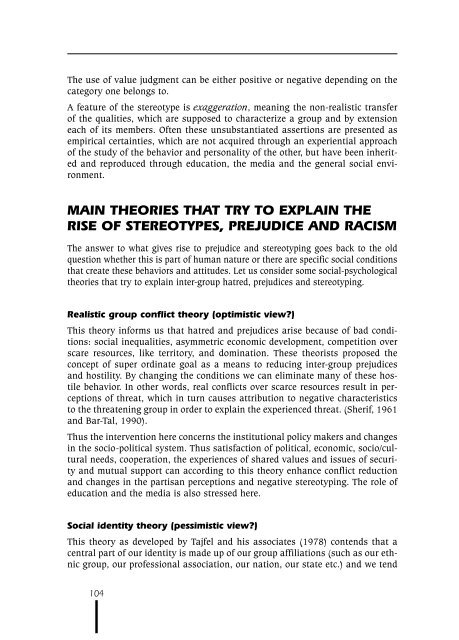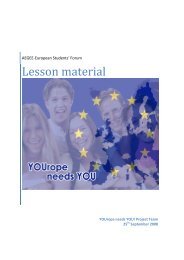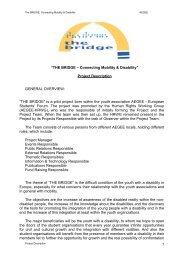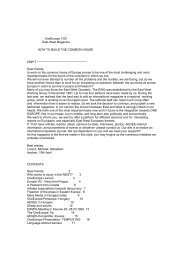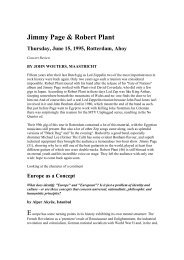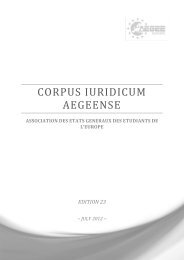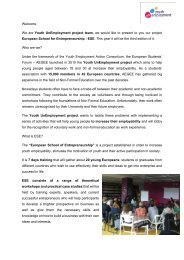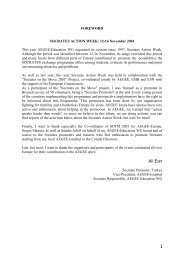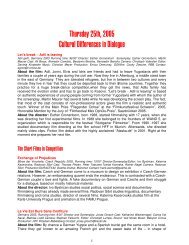europe's (torn?) identity - Projects - AEGEE Europe
europe's (torn?) identity - Projects - AEGEE Europe
europe's (torn?) identity - Projects - AEGEE Europe
You also want an ePaper? Increase the reach of your titles
YUMPU automatically turns print PDFs into web optimized ePapers that Google loves.
The use of value judgment can be either positive or negative depending on the<br />
category one belongs to.<br />
A feature of the stereotype is exaggeration, meaning the non-realistic transfer<br />
of the qualities, which are supposed to characterize a group and by extension<br />
each of its members. Often these unsubstantiated assertions are presented as<br />
empirical certainties, which are not acquired through an experiential approach<br />
of the study of the behavior and personality of the other, but have been inherited<br />
and reproduced through education, the media and the general social environment.<br />
MAIN THEORIES THAT TRY TO EXPLAIN THE<br />
RISE OF STEREOTYPES, PREJUDICE AND RACISM<br />
The answer to what gives rise to prejudice and stereotyping goes back to the old<br />
question whether this is part of human nature or there are specific social conditions<br />
that create these behaviors and attitudes. Let us consider some social-psychological<br />
theories that try to explain inter-group hatred, prejudices and stereotyping.<br />
Realistic group conflict theory (optimistic view?)<br />
This theory informs us that hatred and prejudices arise because of bad conditions:<br />
social inequalities, asymmetric economic development, competition over<br />
scare resources, like territory, and domination. These theorists proposed the<br />
concept of super ordinate goal as a means to reducing inter-group prejudices<br />
and hostility. By changing the conditions we can eliminate many of these hostile<br />
behavior. In other words, real conflicts over scarce resources result in perceptions<br />
of threat, which in turn causes attribution to negative characteristics<br />
to the threatening group in order to explain the experienced threat. (Sherif, 1961<br />
and Bar-Tal, 1990).<br />
Thus the intervention here concerns the institutional policy makers and changes<br />
in the socio-political system. Thus satisfaction of political, economic, socio/cultural<br />
needs, cooperation, the experiences of shared values and issues of security<br />
and mutual support can according to this theory enhance conflict reduction<br />
and changes in the partisan perceptions and negative stereotyping. The role of<br />
education and the media is also stressed here.<br />
Social <strong>identity</strong> theory (pessimistic view?)<br />
This theory as developed by Tajfel and his associates (1978) contends that a<br />
central part of our <strong>identity</strong> is made up of our group affiliations (such as our ethnic<br />
group, our professional association, our nation, our state etc.) and we tend<br />
104


